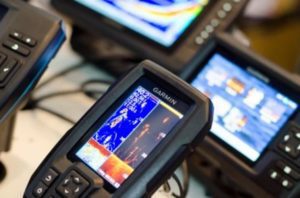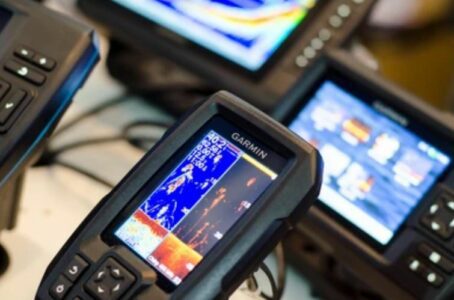 Running a busy life, every habit, every leisure aspect has been cut short.
Running a busy life, every habit, every leisure aspect has been cut short.
When fishing was considered to be days-long sport/leisure activity to sniff the whole seabed by casting the line and waiting for the fishes to jiggle the line.
If no activity was found, the folks then would have decided to move and test their luck in another area.
See, luck! Luck played an important role (see, we are talking in the past for a clear reason!)
Then came the fish finder in the fishing industry that revolutionized the way fishermen used to fish. Fish for recreation or professionalism, the fish finder will be a powerful help to cut the wait time and lower the net right on top of the fish to make every catch almost successful.
Be it a modern or old-designed fish finder, the technology behind does not change but what exactly they hold, no one knows. But it is crucial to know exactly what to look for when buying a fish finder to ease your selection!
What to Look for When Buying a Fish Finder
Remember, all the fish finders have almost the same technology (stressing one more time), so do not fall for the trap of only looking for the modern and expensive ones. Rather, take a good glimpse of what to look for when buying a fish finder and save yourself a few bucks where possible.
The Quick Glimpse of 6 Acute Features the Fish Finder should Hold
- Transducers
- Frequency
- Power
- Screen Resolution
- Cone Angles & Beams
- Transducer Material
1- Transducer
A transducer is the heat of a fish finder that sends and receives the sonar waves to the water surface.
It better works to identify what is beneath the water. The data extracted by the transducer then sends the signals to the fish finder device processing it into the picture format for better understanding.
They come in two different mount types; transom as well as thru-hull mounts for you to decide which one should apply.
The ideal location to mount the transducer is a transom that goes from the back of the boat, and close to the propeller, but make sure to tighten up the wires not to get tangled by the propeller blades.
Whereas the bigger boat may take up the thru-hull mount that requires drilling and placing the transducer permanently.
2- Frequency
Another ingredient of transducers, the sonar waves that go towards the water surface must be containing the proper power to do so.
On a couple of dozens of feet, any kind of transducer may work, but taking things to the professional level, this frequency part is as important.
The transducers are available in different frequencies; single, dual, and multiple. So picking on a good frequency-holding fish finder would do the work in shallow to way deep water.
Transducers coming with dual-frequency for the shallow water can be somewhere between 192 kHz to 200 kHz.
But to use it for deep water fishing, get one from 50 kHz to 60 kHz.
Understand the dilemma here with the frequencies; the transducers that emit the sonar waves at the higher rating are meant to provide more details about the sea life than those ranging to a lower level of frequencies.
Pick at least a dual-frequency fish finder for better and more accurate results in both, shallow and deep water.
3- Power
Another factor that can ruin (or make) your decision to pick the fish finder.
And the solution is, to get to understand this important part.
- Wanting to reach a depth of 400 feet, your fishfinder of 50 kHz frequency operating at 100W is good to go!
- Now if you want to retain deeper depth with your 200 kHz powering up at 100W would not go beyond the range of 100 feet.
So, that is understood: Lower kHz with 100W power can get you to explore more depth which you cannot do so by using a high-frequency fish finder.
4- Screen Resolution
The ideal screen resolution should be 240px X 160px but if you can invest, then why leave the fish finder with screen size of 320px X 320px.
The bigger the screen display, the more you would be able to see.
And the same fit for being a black & white or colored display. The color display is good to distinguish the marine life, rocks, and all with no guessing work.
5- Cone Angles & Beams
Cone angles & beams are the direct features associated with transducers which help to scan the water in a good width.
While most would end up buying the fish finder with single beams, there are some available that emit dual, triple, and even side-on beams which you can comfortably use in shallow water. The more the beams and wider cones, the more expensive the fish finders would be.
But the cone with a single beam works best in deep water, a single layer going towards the water surface picturizing the presence of fish.
So, pick a transducer that supports the range of 16 to 20 degrees and a single beam at least but you can still find the transducers with 9 to 60 degrees.
6- Transducer Material
Just like the transducer is the heart of a fish finder, the transducer material comes with equal importance which depends on where and how you mount it.
Especially in seawater where severe salty water can literally take everything down with rust, there is hardly any material that would bear such an abuse.
Using the transducer on the transom mount, the plastic build should be good to go.
But when mounting thru-hull or in-hull mounts, make sure the boat hulls should be housed with plastic. Whereas the steel or aluminum hulls must contain stainless steel housing.
And go with the bronze housings with the boats made with fiberglass or wood-based hulls.
Conclusion!
These six factors are enough to cover what to look for when buying a fish finder.
Although there are still folks who love device-free fishing, why waste time waiting for the fish to catch?
The fish finder is the ultimate time-savior device making fishing super convenient.
Get one and see how many fish you would catch in a day compared to how much you had caught back in the time without a fish finder!
- What Do You Need for Fishing - August 18, 2022
- How to Find Offshore Fishing Spots - August 18, 2022
- What to Use for Trout Fishing - August 17, 2022

